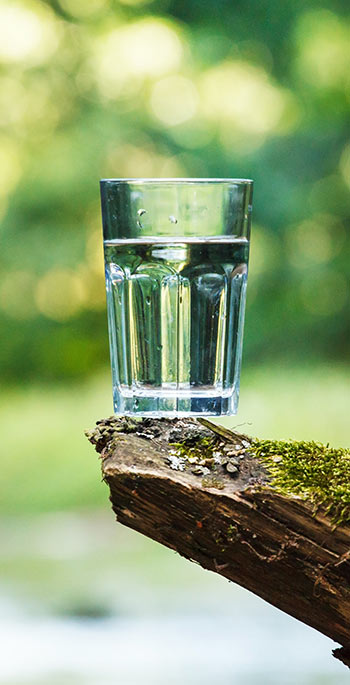
Every homeowner expects to be able to get home from work, turn on their water and get a crisp, clean, healthy glass of water. We take clean drinking water for granted. Unfortunately, sometimes that water is contaminated with harmful organisms or toxins. Millions of people every year in the U.S. get sick from contaminants in their drinking water.
There are water treatment plants all over the country that are built to maintain the quality of our drinking water and make sure people are safe, however they are not full-proof–sometimes water sources are polluted with atypical contaminants that they aren’t equipped to handle. Secondly, they have no way of detecting or addressing issues in your home’s internal plumbing that is causing water contamination. This is where a majority of drinking water issues stem from. Many things can cause contamination of water between when it runs through the main running under your street, to when it exits your kitchen faucet: archaic plumbing systems using materials no longer used due to their toxicity, pollution on the property, damage to the plumbing or mains that allows soil and other surrounding material to enter the water supply, etc.
If the water in your home becomes contaminated, it can be the cause of serious health problems.
Contaminants in water are generally placed into three categories: organic chemicals, inorganic chemicals, and bacterium.
Organic chemicals include contaminants such as solvents, pesticides, chemicals, and chlorine. These are generally responsible in cases where ground contamination on or around property has managed to infiltrate aging or damaged plumbing.
Inorganic chemicals are things like sodium, nitrates and nitrites, fluoride, minerals, and commonly used metals. The most common cause for inorganic chemicals is outdated plumbing beneath a home that are contributing the contamination right before it reaches your faucet. For example, as recently as the 1980s, lead-based solder was used to connect and seal together segments of copper piping. Improper, unlicensed plumbing installations and repairs can also introduce toxic building materials into a home’s water supply.
Bacteria contamination is also a possibility in a home water source due to elevated levels of E. coli or Enterococcus bacteria, both of which result from fecal contamination. This is most common in rural areas due to contaminated surface water being used to irrigate crops, and drawing drinking water from lakes or ground wells contaminated by agricultural runoff. In rare instances, drinking water can be contaminated by more potentially life-threatening lifeforms, such as Giardia, Shigella, Cryptosporidium, and norovirus.
It’s important to make sure that your drinking water is safe and contamination-free.
The EPA maintains strict guidelines as to what chemicals, metals, minerals, and organisms are allowable in public drinking water, and in what levels. IR Environmental offers a wide range of analytic tests to examine water sources and determine if they meet the federal standards set by the EPA.
When our certified inspector comes out to your home, they will collect samples of the water to be sent in for analysis to one of the third party laboratories we work with. The analysis will include testing for pH levels, ion levels, organic and inorganic contaminants, alkalinity, and bacteria.
The only way for you to be sure the water your drinking is safe is to have it tested in a laboratory setting. Even in small doses, some contaminants can have extremely harmful or even fatal health consequences.
